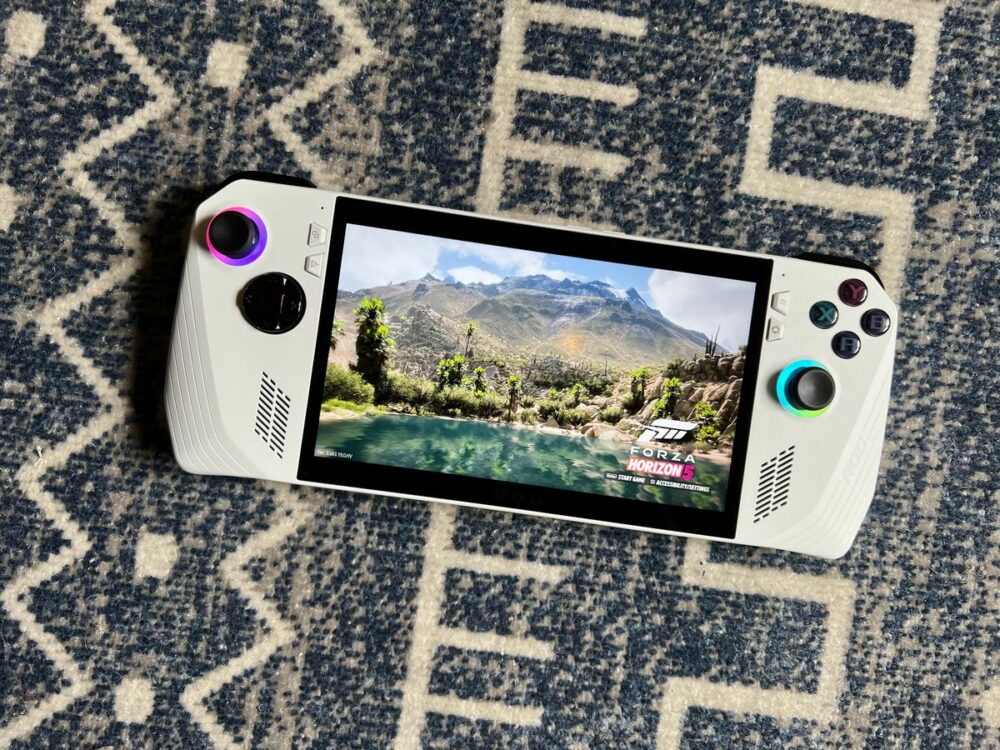If you want a handheld gaming PC, there are only two legitimate options. In theory, the choice should be simple.
You could pick Valve’s Steam Deck, which established this entire hardware niche last spring, or its first legitimate challenger, Asus’ ROG Ally, which is hitting stores this summer. It’s a battle between the established industry leader and the sleeker, more powerful, and slightly more expensive upstart.
The trouble is, both the Steam Deck and Ally are excellent handhelds. There’s no obvious winner. Making the choice depends on what you need from these expensive portable PCs. The ROG Ally Z1 Extreme will be available for sale worldwide on June 13 for $699.99, and pre-orders should now be live.
When I reviewed the Steam Deck, I called it “my favorite video game console.” A year and change later, I’m even more certain of that belief. I wager that I spent more than half my time gaming last year with it, whether on my couch, in the airport, or at the cafe down the street. For all its greatness, however, the Steam Deck remains a first draft. The device is big, the battery life is small, and a handful of its boldest design choices (it runs on Linux and has a console-like user interface) double as its biggest hindrances (it doesn’t run Windows out of the box, making everything outside of Steam a headache at best and a nonstarter at worst).
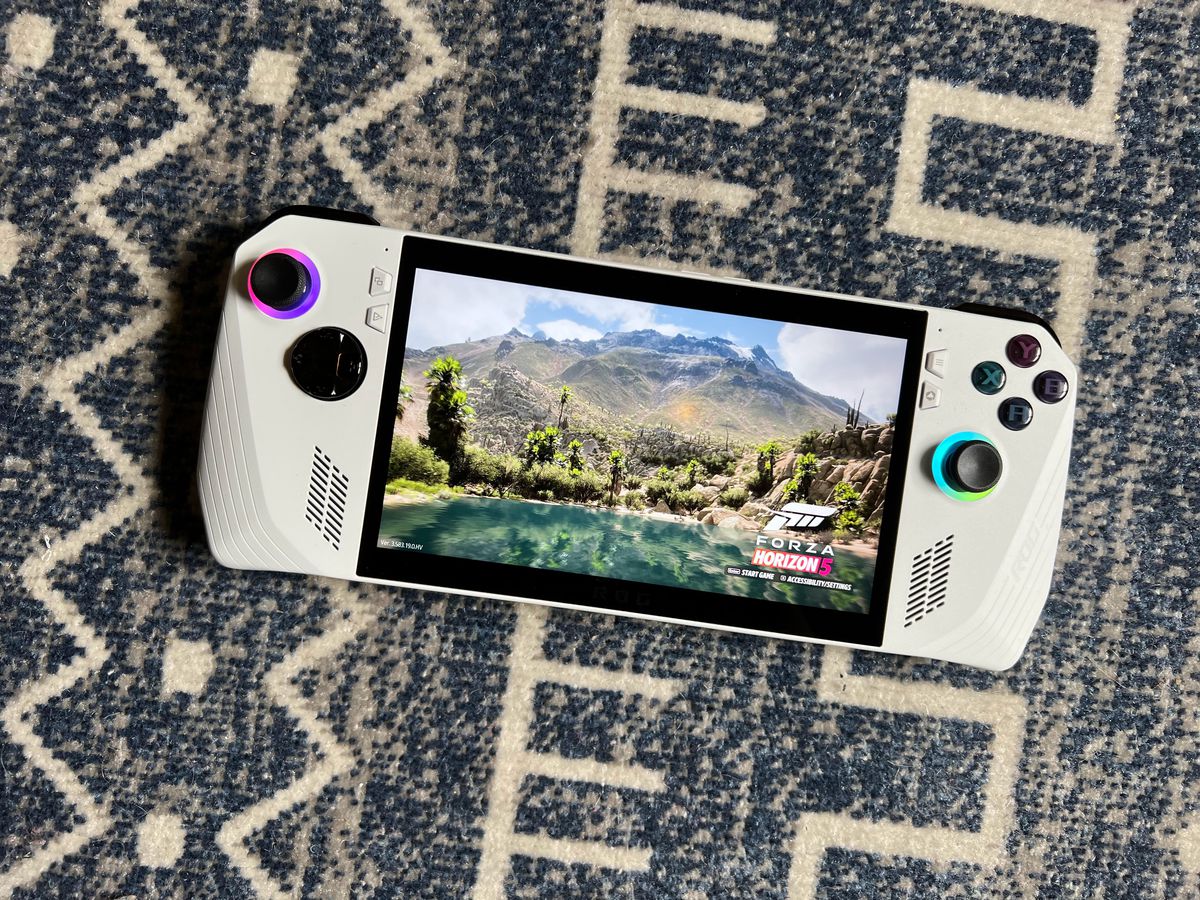
This is where the Asus ROG Ally comes in. It’s a bizarro Steam Deck, often excelling in what the Steam Deck can’t do, but struggling with what the Steam Deck can. First and foremost, it comes with Windows right out of the box, like some funky-shaped gaming laptop. Anything built for Windows — basically 99% of software — works here. Want to download games from Xbox Game Pass, the Epic Games Store, GOG, or Itch.io? Go for it! Want to make use of decades’ worth of emulation software? That’s cool. Want to plug a USB-C dongle into the gaming handheld, then connect a monitor, mouse, and keyboard so that you can use it as the weirdest little work PC? You’re my sort of weirdo — go ahead and be yourself!
And yet, just like with the Steam Deck, the choices that elevate the ROG Ally occasionally chop it at the knees. The Ally isn’t like a gaming PC; it is a gaming PC. And Windows 11 isn’t designed to be navigated on the personal computing equivalent of a Nintendo Switch.
All of this is to say that neither the ROG Ally nor the Steam Deck is without its flaws, and none of those flaws are deal-breakers. So the best way to make a pick, in my humble opinion, is to focus on the positives.
Which one does more of what you want?
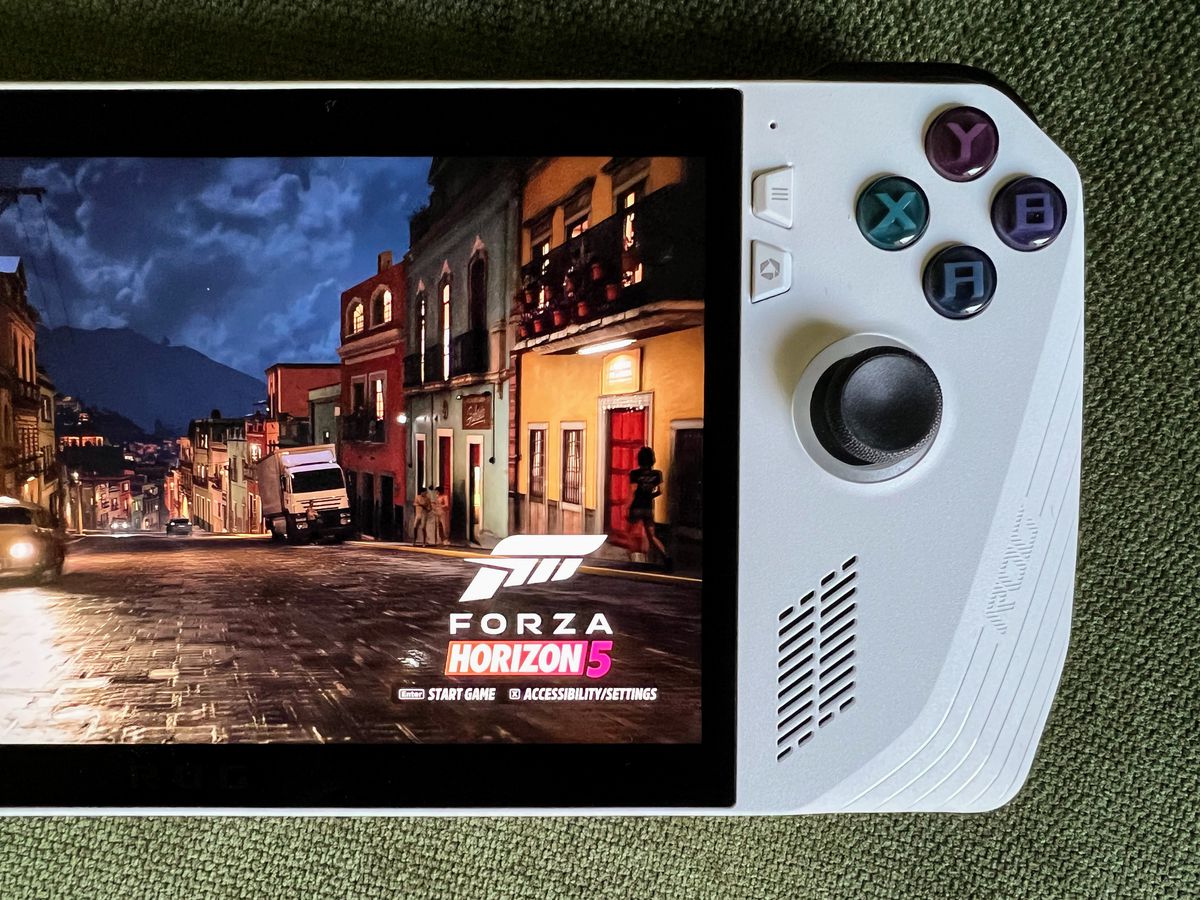
You should buy the Asus ROG Ally if: you want the absolute best — on paper
On paper, the Ally bests the Steam Deck in nearly every way, though rarely by a substantial measure.
The Ally is lighter and more powerful. Asus fit in an AMD Ryzen Z1 processor, 16 GB RAM, and a 512 GB PCIe Gen4 NVMe SSD. It has a clever thermal system that kept the hardware relatively quiet when I threw demanding modern games at it, like the Resident Evil 4 remake. AMD’s graphics-boosting tech, Radeon Super Resolution (RSR) and FidelityFX Super Resolution (FSR), can be turned on from an overlay. It made a noticeable difference in performance in demanding AAA games like Forza Horizon 5.
The 1080p 120Hz display has a higher resolution and twice the refresh rate of the Steam Deck’s screen. It’s worth noting that the Ally uses an IPS panel rather than the superior OLED technology in the most recent Switch model. But it certainly appears brighter than any other handheld, OLED Switch included. In my office, with the lights off, I felt like I was cradling an industrial-strength flashlight.
Ally owners will also have the option to funnel even more graphical power through the device by connecting an XG Mobile external GPU. I didn’t have the opportunity to try this for myself, but our sibling site, The Verge, has written about Asus’ use of plug-in graphics cards in the past. For folks who don’t want the bulk of a gaming PC, but feel constrained by the power limitations of a portable, it’s a promising (albeit pricey) third option.
You should buy the Asus ROG Ally if: you have a huge collection of PC games outside of Steam
This is the reason the Ally will have a permanent spot on my desk for the foreseeable future. I have watched countless YouTube tutorials on how to play non-Steam games on my Steam Deck. Reader, I am a dullard, and the results reflect that.
By comparison, the Ally makes PC gaming (not simply Steam gaming) a breeze. Everything just works. If you have Commander: No Remorse on EA’s Origin, Final Fantasy 7 Remake on the Epic Games Store, and a couple of hundred games you downloaded off itch.io through a Humble Bundle, then wow — we have similar gaming tastes! And like me, you will have no trouble sliding into each of them within minutes of opening the Ally and connecting it to Wi-Fi.
Even with games on Steam, there’s a case for the Ally’s superiority. The Steam Deck translates games designed for Windows through Proton. While it works for most games, it doesn’t work for every game. With the Ally, any game that runs on Windows (and has minimum specs met by the Ally hardware) should work.
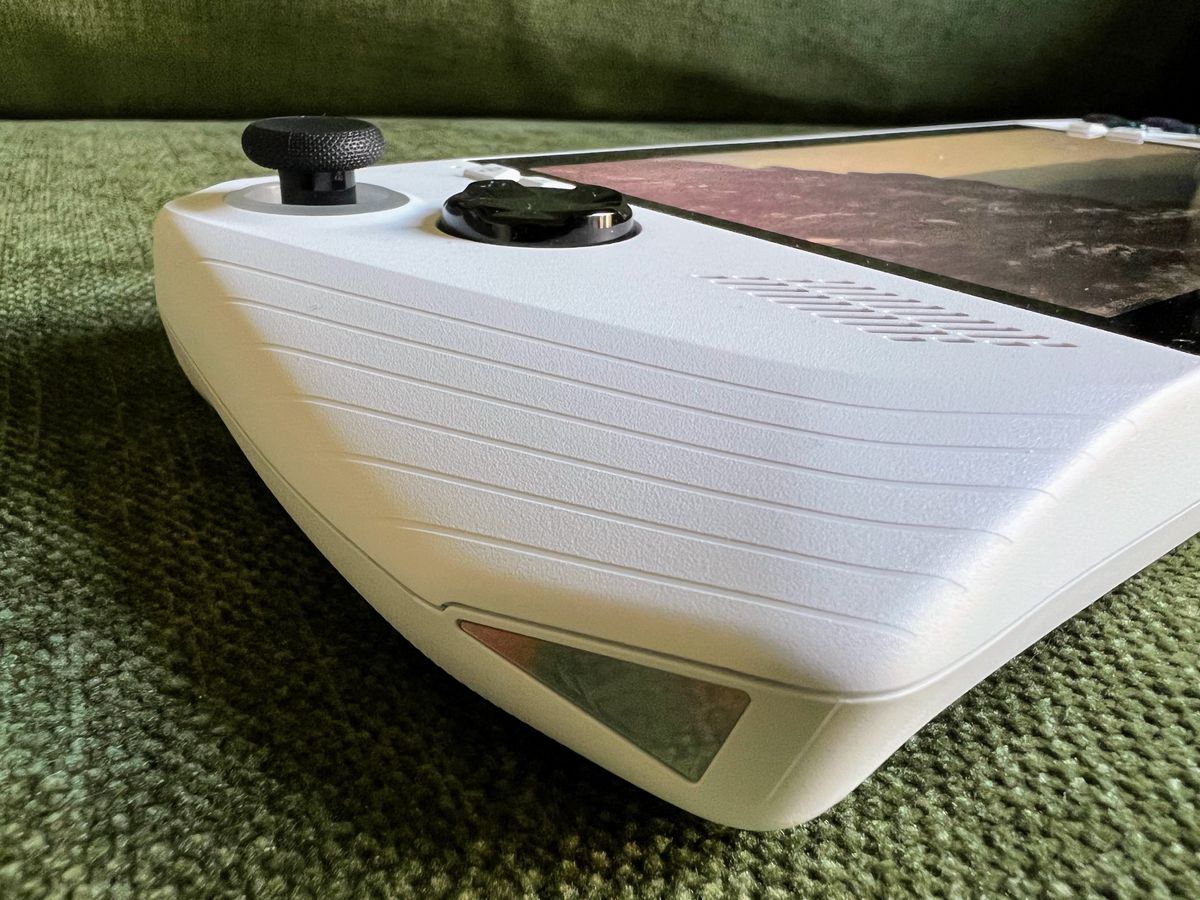
You should buy the Asus ROG Ally if: you want something a little more portable, or you just like the gamercore aesthetic
The Ally is lighter and smaller than the Steam Deck. This isn’t as noticeable in the hands — it’s not that much lighter — but it makes a greater difference when tossing the gizmo in a bag. And it definitely looks more discreet in public places.
I tested the Ally at a coffee shop and then a brewery, and at both spots I felt like someone playing a slightly sharper-edged Switch. I didn’t get any confused looks. Nobody asked me about the hardware. The Ally blends in, especially if you turn off the RGB lighting emanating from the joysticks. This contrasts with my experience with the Steam Deck, which is so large and bulky that strangers on airplanes routinely look at me with eyes reserved for tax collectors and dog haters.
You should buy the Asus ROG Ally if: you want the entirety of tinkering freedom that comes with Windows
This is decidedly not me, but describes many of my peers at Polygon, who love setting up their gaming hardware as much as (if not more than) actually playing games. The Asus ROG Ally is a gaming PC through and through, and while that fact is responsible for my occasional headaches, the freedom will be a boon for people who want to push the boundaries of what can be done with portable gaming hardware. All of the mods and development tools built for Windows PCs should fit comfortably on the Ally.
Is this the same sort of tinkering afforded by Linux on the Steam Deck? It’s not, but I have to believe that anybody who loves Linux has already made up their mind.
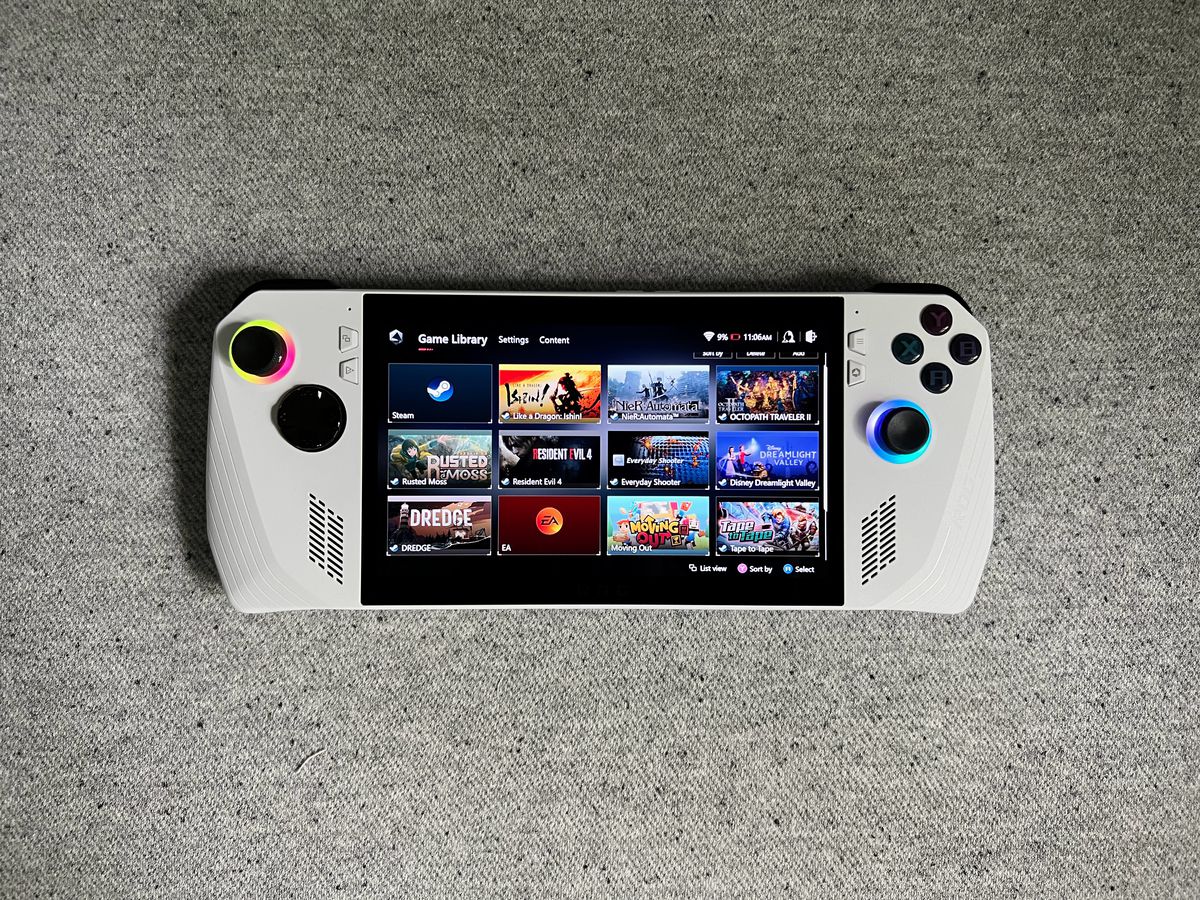
You should buy the Steam Deck if: you want a console-like experience
Like I said, the Ally is literally a handheld gaming console running Windows — which is not something Windows was designed for. To solve for the obvious navigation pain points, the Ally comes with Armoury Crate SE installed, a user interface that is meant to compete with Steam’s operating system.
If Armoury Crate SE worked, you would be able to simply and reliably click around its menus, picking games or streaming apps or whatever else you’d like without ever having to fumble through the Windows desktop using a D-pad and a fussy touchscreen. Unfortunately, in my first few days with the Ally, this often wasn’t the experience. Navigating Armoury Crate SE (and through it, the entire Ally device) frustrated me, spoiling my time between games.
Is learning Armoury Crate’s messy system impossible? Of course not. Am I gradually getting comfortable controlling Windows with a touchscreen? Yeah, it’s only been a few days. But let me be clear: If you’re switching from, say, the Switch to something like the ROG Ally, you will discover the true meaning of the words that await all newcomers to the world of PC gaming: “trial and error.”
You should buy the Steam Deck if: you immediately want a helpful community
The Steam Deck has a year’s headstart on the Ally in terms of user support. At launch, getting emulators, the Epic Games Store, and Xbox Game Pass to run on the Steam Deck through Linux took me hours. Now, user-made tools have turned these barriers into minor speed bumps. The Steam Deck community shows a genuine love for the hardware, the sort that we typically see from homebrew, jailbreaking, and (unsurprisingly here) Linux communities.
The Ally could have an even bigger community, sooner rather than later, if Asus is able to get the handheld to retailers like Best Buy and Amazon. This could be the first mainstream PC handheld. But with the Switch still soaring and a new Zelda game about to launch, how many people are there who want to spend this much money on a higher-end gaming handheld and haven’t bought the Steam Deck already?
That’s a sincere question. I really don’t know.
You should buy the Steam Deck if: comfortable ergonomics are a premium
The Ally is a bit lighter than the Steam Deck, which sounds like a positive! But the Steam Deck’s bulky handles better recreate the feel of an Xbox controller. The Ally is akin to a slightly more comfortable Switch, with gentle curves on the front and back to give your hands some grip, though not enough for the handheld to really settle into your palms. The sleeker design also pushes the ventilation to the top, similar to the Steam Deck, near the volume and power buttons. This is good, in that the hot air isn’t spit out the back and into your lap. But I found the heat to be more noticeable with the Ally. Though the air still does flow away from the device, it’s like you’re projecting a small (and relatively quiet) space heater into the world.
You should buy the Steam Deck if: price matters
Though the Ally is more powerful than the Steam Deck in many ways, it’s accordingly more expensive. The Asus ROG Ally Z1 Extreme retails for $699.99. The Steam Deck is available in three models ranging from $399 to $649.
What to buy: The Asus ROG Ally or the Steam Deck?
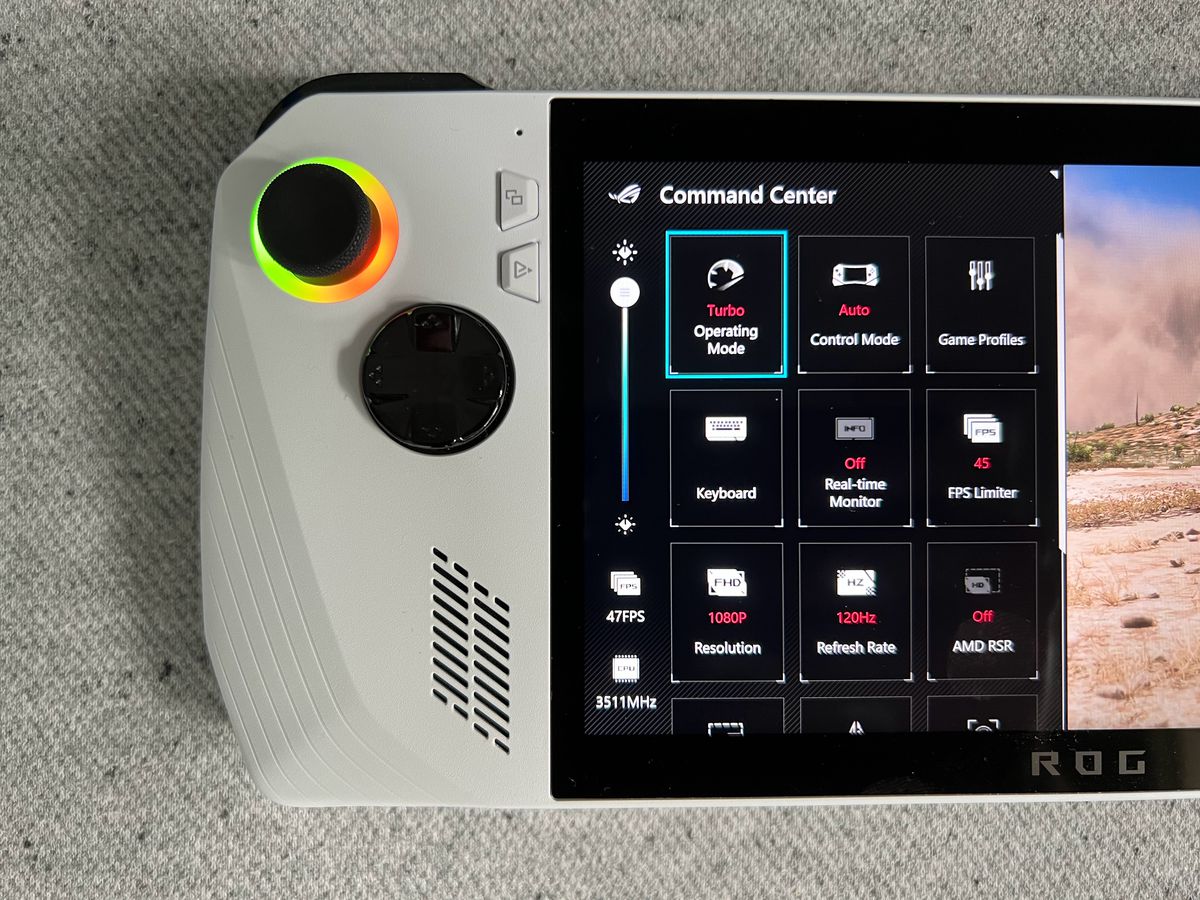
I figured that after the review, I would inevitably return to the Steam Deck out of habit. But for now, it’s tucked into my bedside table. I’ve swapped my Octopath Traveler 2 playthrough, the Ally’s lighter build and brighter screen making this device an ideal match for long, late-night tours of fantastical worlds.
For you, dear reader: There’s no slam-dunk choice. But there’s no air ball, either. In fact, both handhelds are fantastic. Whether I carry around the Steam Deck or the ROG Ally on the regular, I’ll be happy with my choice. And I think you will be too. Having decades of video games on a device I can keep in my backpack and still have room for my laptop and water bottle — that feels like magic.
The Asus ROG Ally Z1 Extreme will be released June 13 for $699.99. This review was conducted with a retail unit provided by Asus. Vox Media has affiliate partnerships. These do not influence editorial content, though Vox Media may earn commissions for products purchased via affiliate links. You can find additional information about Polygon’s ethics policy here.
- SEO Powered Content & PR Distribution. Get Amplified Today.
- PlatoAiStream. Web3 Data Intelligence. Knowledge Amplified. Access Here.
- Minting the Future w Adryenn Ashley. Access Here.
- Buy and Sell Shares in PRE-IPO Companies with PREIPO®. Access Here.
- Source: https://www.polygon.com/reviews/23718673/asus-rog-ally-review-steam-deck-what-to-buy
- 11
- 13
- 7
- a
- AAA
- able
- About
- above
- Absolute
- accordingly
- actually
- Affiliate
- after
- ahead
- Airplanes
- airport
- All
- already
- also
- am
- Amazon
- AMD
- an
- and
- any
- Anything
- apps
- ARE
- around
- as
- Asus
- ASUS ROG
- At
- available
- away
- back
- ball
- barriers
- battery
- Battle
- BE
- been
- belief
- believe
- BEST
- Better
- between
- BIG
- bigger
- Biggest
- Bit
- both
- bought
- boundaries
- Box
- brewery
- brighter
- build
- built
- Bundle
- but
- buy
- by
- called
- CAN
- carry
- case
- Center
- certain
- certainly
- Challenger
- change
- choice
- choices
- Chris
- clear
- click
- Coffee
- collection
- Collectors
- comes
- commissions
- Communities
- community
- comparison
- compete
- computing
- conducted
- connect
- connecting
- Console
- content
- contrasts
- controller
- controlling
- cool
- could
- Couple
- course
- days
- decades
- definitely
- demanding
- depends
- Design
- designed
- desk
- desktop
- Development
- development tools
- device
- difference
- discover
- do
- does
- dog
- done
- double
- down
- download
- draft
- each
- Earn
- Editorial
- either
- ELEVATE
- else
- Emulation
- Emulators
- enough
- entire
- Epic
- Epic Games
- epic games store
- equivalent
- especially
- established
- ethics
- even
- EVER
- Every
- everything
- expensive
- experience
- External
- extreme
- eyes
- fabric
- fact
- fantastical
- FANTASY
- favorite
- feel
- few
- figured
- find
- First
- fit
- flaws
- flow
- Focus
- For
- foremost
- foreseeable
- Forza
- Forza Horizon
- Forza Horizon 5
- Freedom
- from
- front
- future
- game
- Game Pass
- Games
- Games Like
- Gaming
- Gaming Laptop
- gaming pc
- genuine
- Get
- getting
- give
- Gizmo
- go
- GOG
- good
- GPU
- graphics
- gray
- greater
- Green
- half
- Handles
- hands
- happy
- Hardware
- has
- Have
- having
- Headaches
- headstart
- helpful
- here
- higher
- hitting
- homebrew
- horizon
- hot
- hours
- How
- How To
- however
- HTTPS
- huge
- Humble
- Humble Bundle
- hundred
- i
- if
- immediately
- impossible
- in
- Included
- industry
- Industry Leader
- inevitably
- influence
- information
- interface
- into
- Is
- IT
- ITS
- jailbreaking
- jpg
- june
- just
- keep
- kept
- Keyboard
- know
- laptop
- large
- last
- later
- launch
- leader
- learning
- left
- legitimate
- Library
- Life
- Lighting
- like
- limitations
- links
- linux
- Little
- Live
- Long
- Look
- looks
- love
- loves
- made
- Magic
- Mainstream
- make
- MAKES
- Making
- many
- many people
- Match
- May
- meaning
- meant
- measure
- Media
- mind
- minimum
- minor
- minutes
- Mobile
- model
- models
- Modern
- mods
- money
- Monitor
- more
- most
- much
- my
- Navigating
- Navigation
- Near
- nearly
- need
- Niche
- Nintendo
- Nintendo Switch
- no
- not
- now
- obvious.
- of
- off
- Office
- often
- Oled
- on
- One
- only
- opening
- operating
- operating system
- Opinion
- Opportunity
- Option
- Options
- or
- Origin
- Other
- our
- out
- owners
- Pain
- Pain points
- panel
- Paper
- partnerships
- pass
- Past
- PC
- pc games
- PC Gaming
- PCs
- People
- performance
- personal
- pick
- picking
- places
- plato
- plato data intelligence
- platodata
- platogaming
- play
- Playing
- playing games
- plug
- Points
- policy
- Polygon
- power
- powerful
- price
- processor
- Products
- promising
- Proton
- provided
- public
- purchased
- push
- question
- RAM
- rate
- rather
- Reader
- really
- reason
- recent
- reflect
- regular
- relatively
- released
- remains
- reserved
- resolution
- responsible
- Results
- retail
- retailers
- return
- review
- right
- ROG
- room
- routinely
- Run
- running
- Said
- sale
- same
- say
- scene
- Screen
- see
- setting
- settle
- Shop
- should
- shows
- side
- similar
- Simple
- Simply
- sliding
- small
- smaller
- So
- Software
- SOLVE
- some
- something
- Space
- Specs
- speed
- spend
- Spot
- spring
- SSD
- Steam
- Steam Deck
- still
- store
- stores
- streaming
- street
- struggling
- substantial
- summer
- super
- superior
- support
- Switch
- system
- table
- tax
- tech
- Technology
- terms
- than
- that
- The
- The Game
- the world
- their
- Them
- then
- theory
- there
- thermal
- These
- think
- third
- this
- those
- though
- three
- Through
- time
- to
- too
- took
- tools
- top
- Touchscreen
- tours
- true
- try
- turn
- tutorials
- Twice
- two
- typically
- unfortunately
- up
- Upstart
- USB-C
- use
- User
- using
- via
- Video
- video games
- volume
- vs
- want
- was
- Water
- way
- ways
- we
- What
- whatever
- when
- where
- whether
- while
- WHO
- Wi-fi
- will
- windows
- Windows 11
- winner
- with
- within
- without
- words
- Work
- worked
- works
- world
- Worlds
- worldwide
- worst
- worth
- would
- WoW
- written
- xbox
- Xbox Game Pass
- year
- yet
- you
- your
- youtube
- Zelda
- zephyrnet
